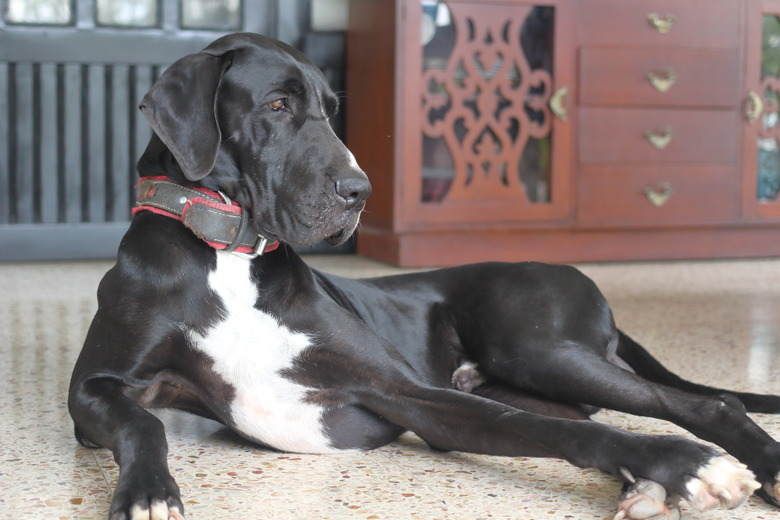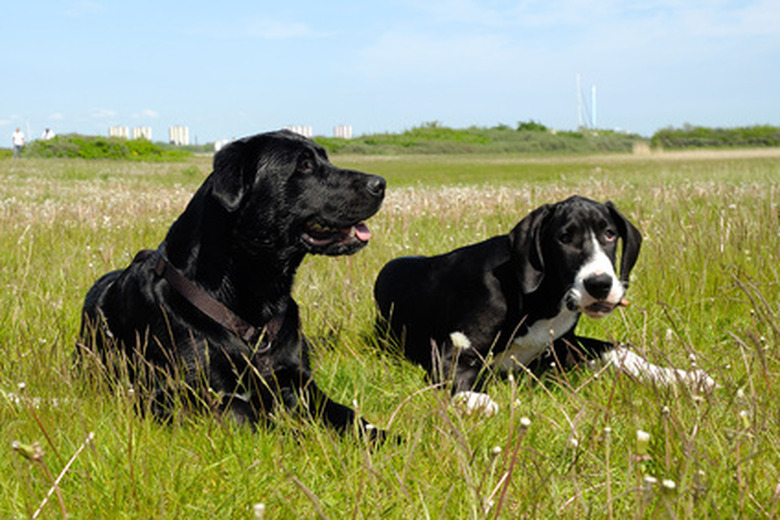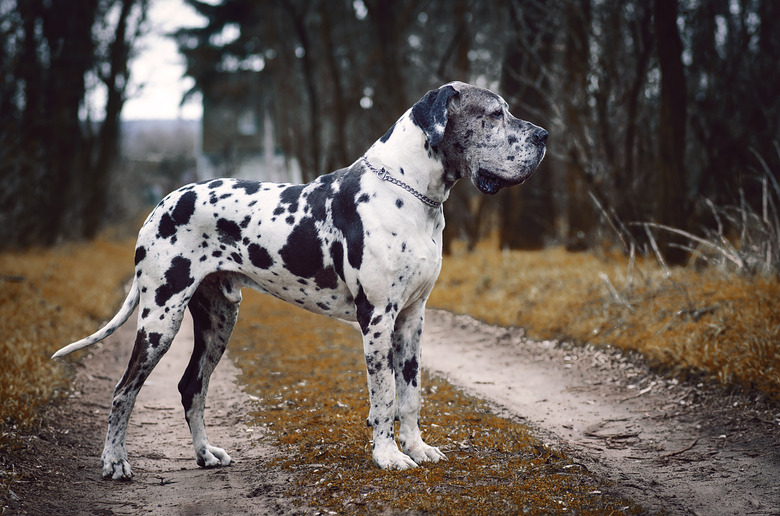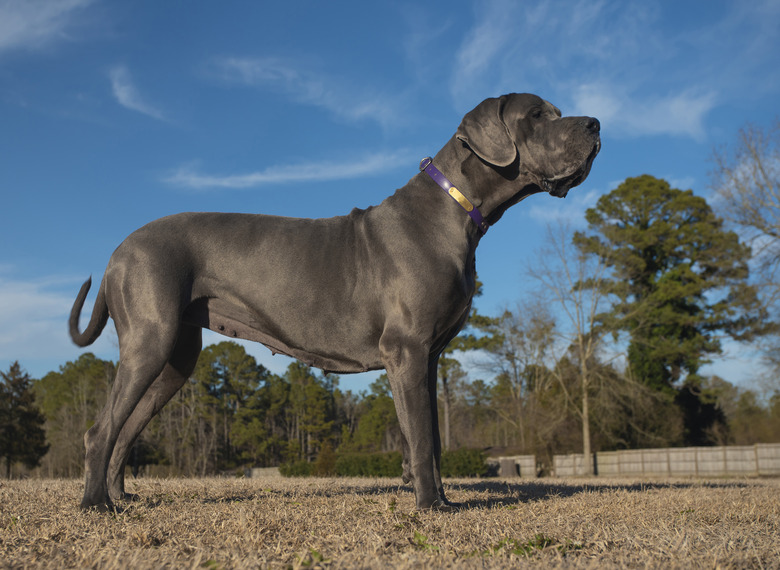Great Dane Skin Problems: Allergies, Mites, And Diseases
All dogs can become afflicted with bacterial dermatitis, ringworm, or mange, but Great Dane skin problems can include the following skin diseases: acral lick dermatitis, atopy, demodicosis, hypothyroidism, histiocytoma, and zinc-responsive dermatosis.
Do Great Danes have skin problems?
Do Great Danes have skin problems?
Great Danes are known for a few health concerns but can also be affected by several different skin problems. Some skin problems are congenital, but others can be triggered by the environment.
Common Great Dane skin problems
Common Great Dane skin problems
A few of the most common Great Dane health problems are described below.
Demodicosis
All healthy dogs carry small numbers of the Demodex mite in their hair follicles, but an inherited immune system defect in Great Danes causes this mite to multiply and can cause localized spots of red, scaly skin and hair loss that progresses into the more serious generalized demodicosis. Localized demodicosis is seen in Great Dane puppies who are 3 to 6 months old, usually on the face or front legs. This usually clears up on its own. There is a hereditary factor to generalized demodicosis, but any dog can have flareups of localized demodicosis.
Generalized demodicosis becomes apparent from 3 to 18 months and spreads over the entire dog. Secondary skin infections can occur from bacteria and/or yeast and can complicate treatment. Some dogs develop patches on top of the paws, between the toes, and/or on the pads of their paws, which can easily become infected and painful. Demodicosis is a skin disease that will not spread to other pets or humans.
Hypothyroidism
Hypothyroidism is common in Great Danes. It may be congenital or adult onset primary hypothyroidism. The congenital condition is rare but can be identified by the stunted growth of Great Dane puppies. They also develop other abnormalities because of the lack of thyroid hormones, and severely affected puppies die before weaning.
Congenital hypothyroidism can be treated if it's caught before the dog ages past 3 to 4 months. Adult onset primary hypothyroidism becomes evident in middle-age dogs who are about 4 to 10 years of age. Clinical signs of hypothyroidism include changes in the coat of the Great Dane, like symmetrical hair loss, dry hair, or greasy hair. If afflicted, your Great Dane will need thyroid replacement hormones for the rest of their life.
Histiocytomas
Histiocytomas are benign tumors that grow on the ears, head, or limbs of Great Danes, most often when they are younger than 2 years old. This skin disease doesn't pose a health risk unless the tumors are itchy and your Great Dane chews or chews at them or seems bothered by them. Most histiocytomas disappear on their own, but if they don't, they can also be removed by traditional surgery or by being frozen off.
Zinc-responsive dermatosis
Great Danes, along with some other dog breeds, seem to have a deficiency that tends to be due to inadequate absorption from the gut (so it's not just that they need more), or they are taking supplements like calcium that block zinc absorption. This skin disease usually occurs around puberty and appears as crusting, reddening, and scaling around the eyes and muzzle. The patches can also occur on the footpads and around the anus and vulva. Hair loss also occurs, and the skin is itchy in about half the cases. Zinc-responsive dermatosis is easily treated with zinc supplements. Some dogs may need to stop taking any supplements that interfere with zinc absorption.
Acral lick dermatitis
Acral lick dermatitis is also known as lick granulomas. Great Danes are among the dog breeds commonly afflicted with this skin disease. Dogs will continually lick at a leg area until it becomes open, raw, and weeping. It can become ulcerated and vulnerable to secondary infections.
It is believed that intelligent breeds can easily become bored and frustrated, contributing to acral lick dermatitis. Other theories about its cause include inherited sensory nerve disorder and obsessive-compulsive disorder.
Lick granulomas are difficult lesions to treat. Your veterinarian may prescribe an anti-inflammatory or an antibiotic if infection is present to help heal the granuloma. Longer-term treatment options to avoid developing more granulomas include prescribing anti-anxiety or antidepressant medications, giving you guidance to help you enrich your dog's environment, or recommending behavior modification techniques.
What is the treatment for dry skin on a Great Dane?
What is the treatment for dry skin on a Great Dane?
Depending on the cause of the dry skin on your Great Dane, there are various treatment options. Some itchy skin conditions, like hot spots or fleas, can be helped by antihistamines, medicated baths, topical sprays, or creams and can be managed with omega-3 and essential fatty acids added to their diet. Skin conditions like hot spots that are bacterial infections, or conditions that lead to bacterial infections may require prescription antibiotics.
The bottom line
The bottom line
A Great Dane's health can be affected by several different skin problems. The underlying cause and severity will determine the treatment options. Some conditions may be managed with supplements or diet change, but others may require lifetime management with prescription medications.



